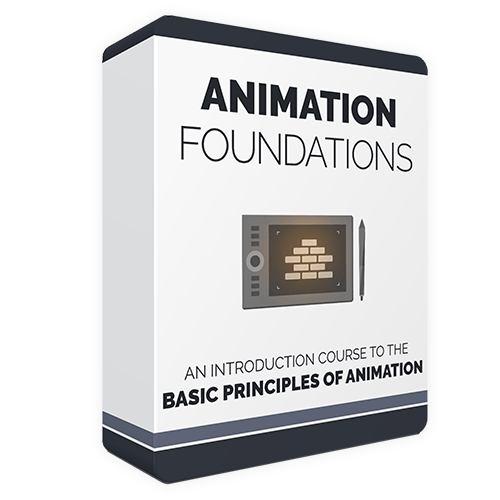Diálogo
The dialogue follows the action description unless there’s no one speaking in the scene.
Unlike most of the text in a screenplay, the dialogue is centered on the page, which makes it stand out and helps the flow of reading.
It consists of two parts: 1) the name of the character speaking and 2) the words they say.
The name of the character should always be capitalized, while the words are in standard sentence case:
SARAH
Were you followed?
JOE
No. I don’t think so. Did you bring the money?
You can add special directions, written in parenthesis, either between the character name and the dialogue or to the right of the character name.
The first use case for these is acting direction, such as “angrily” or “quietly”:
SARAH
(Whispers)
Were you followed?
JOE
(Nervously)
No. I don’t think so.
Did you bring the money?
These directions are often frowned upon and should be used rarely if at all.
Use them only if you have a very specific direction for the actor that cannot be left to chance.
A more common and accepted use of these directions is to let the reader know the character is talking to a specific character when a few characters are in the scene:
MICHA
Are the cameras in place?
JODY
They’re setting them up now.
MICHA
(To Lenny)
And the mics?
LENNY
All set!
It’s always best to let the writing tell the story rather than explain to the reader what you’re trying to do, so try to not use these instructions if possible.
A third use of these directions is when a character is speaking in a different language:
SARAH
Were you followed?
JOE
No. I don’t think so. Did you bring the mon—
Sarah’s phone RINGS. She answers.
SARAH
(In French)
No. I just got here. I’ll call you later.
SARAH
(In French, subtitled)
No. I just got here. I’ll call you later.
All dialogue in [brackets] is in French.
SARAH
Were you followed?
JOE
No. I don’t think so. Did you bring the mon—
Sarah’s phone RINGS. She answers.
SARAH
[No. I just got here. I’ll call you later.]
Another use of parenthesis is when using VO or OS, which stands for Voice Over and Off Screen.
When we hear the character’s thoughts or narration over the picture, that is called a voice-over and should be indicated in the script as follows:
JOE (V.O)
I knew this might be a trap, but I had no choice.
There was only one way to find out.
JEREMY
You thought it would be that easy, huh?
Hand over the money. Now!
JOE
Do you have the money?
SARAH
Why are you so nervous? You have nothing—
VOICE (O.S)
Get your hand off the suitcase!
Sarah turns to find JEREMY standing with a gun pointed at her.
JEREMY
You thought it would be that easy, huh?
Hand over the money. Now!
EXT. PARK – DAY
Mary sits on a bench, staring at the pond. In the distance, ducks paddle about. Suddenly, she notices a shadow moving over her and looks up. It’s John. He stands behind her, his arms folded, looking down at her.
INT. LAB – DAY
A MAN is tied to a chair. In front of him is OFFICER DAN.
OFFICER DAN:
Alright, Mr. Porter, seems like you have passed all the tests. We have confirmed you are not an android and you may be discharged. Sorry for the trouble.
The HANDCUFFS snap to release the man’s hands. He rubs his wrists.
MAN:
No worries, officer. It was no trouble at all.
The man smiles. E.C.U ON his pupil shows a tiny BARCODE.
INT. HOSPITAL ROOM. DAY
MICHAEL’S P.O.V
It’s blurry. Michael sees a NURSE cleaning her tools at the sink. The DOCTOR types at his computer.
MICHAEL:
W… where am—
It gets blurrier. He passes out.
EXT. SNOWY MOUNTAINS – VARIOUS
MONTAGE:
1) Feba runs. She follows a path from the LOOKOUT point and reaches a river. She decides to follow it.
2) LATER on a snowy road. An intense snowstorm is against her.
3) NIGHT TURNS TO DAY. She’s still on the path. Storm has stopped. She’s exhausted.
4) NEW TERRAIN. Different animal shadows watch her as she paces. Rodents. Spiders. Birds. She’s scared.
EARLY MORNING. She’s weak. Walks slower. Eyes tired.
INT. DINER. DAY
JOE walks towards his table. JANE, The waitress accidentally runs into his shoulder.
JANE:
Whoops! Didn’t see you there.
Joe looks at her as she walks away. His eyes widen.
FLASH TO:
–– Joe walking past Jane on the bus.
–– Jane gets off the bus, throwing a huge smile his way before stepping onto the street.
–– Joe smiles back.
BACK TO SCENE
JOE:
It’s her!
CUT TO:
INT. BUS – DAY (FLASHBACK)
Joe sits on the bus. Jane accidentally steps on his shoe.
JANE:
Oh, I’m so sorry!
JOE:
It’s fine, don’t worry about it.
She keeps walking, smiling at him. She gets off the bus.
CUT TO:
INT. DINER. DAY
Joe stares at Jane as she picks up a plate from a table.
JOE:
It’s her!
BEGIN FLASHBACK
INT. BUS – DAY
Joe sits on the bus. Jane accidentally steps on his shoe.
JANE:
Oh, I’m so sorry!
JOE:
It’s fine, don’t worry about it.
She keeps walking, smiling at him. She gets off the bus.
EXT. CITY STREET – DAY
Joe walks down the street, looking around nervously. He spots a BAR across the street and makes his way toward it.
INT. BAR – DAY
Joe enters the bar, looking around for a seat. He spots an empty stool at the end of the bar and takes a seat.
BARTENDER
What can I get for you?
JOE
Just a beer, thanks.
The Bartender slides a beer down to Joe and leans in.
BARTENDER
What’s on your mind?
JOE
I just saw the most beautiful girl on the bus.
I didn’t even get her name.
BARTENDER
Well, that’s a shame.
Maybe you’ll run into her again!
JOE
(chuckles)
Yeah, maybe.
BARTENDER
You never know.
The Bartender nods and goes back to cleaning glasses as Joe takes another sip of his beer.
BACK TO PRESENT
INT. DINER. DAY
Joe stares at Jane as she picks up a plate from a table.
JOE:
It’s her!



